Pasta dishes are also popular in Japan, but Tarako Spaghetti is especially beloved. The distinctive flavor of tarako (salted pollack roe) pairs well with spaghetti and has won the hearts of many Japanese people.
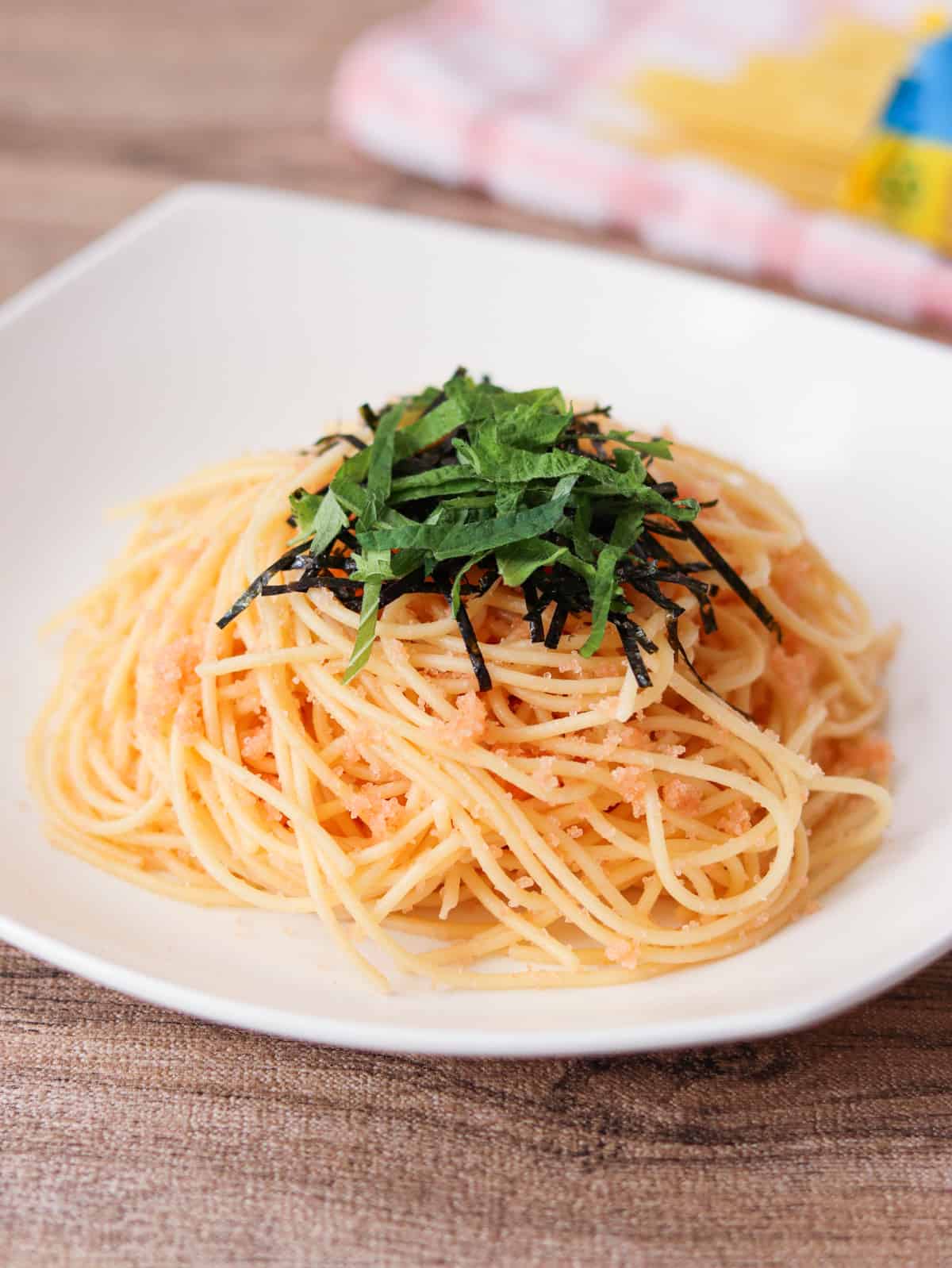
Jump to:
What is Tarako Spaghetti?
Tarako Spaghetti is a pasta dish made by mixing boiled spaghetti with tarako and butter. "Tarako" is salted pollack roe, and its unique flavor blends well with butter, creating a rich and delicious sauce. It is a hugely popular dish in households and restaurants in Japan.
While there are various types of pasta, spaghetti is commonly used in this dish. The thin strands pair well with the tarako. You can also use other types of pasta, so feel free to experiment according to your preference.
Exploring tarako
Tarako is salted roe from Alaskan pollock. Some readers may hesitate to eat fish roe, but wouldn't you eat caviar made from sturgeon roe? Consider tarako as Japan's equivalent of caviar. It is a common ingredient that can be easily found throughout Japan and is a staple on Japanese dining tables.
Tarako is usually eaten without being cooked because its color and texture change when heated. It is popular as a topping for rice and as a filling for onigiri (rice balls), as well as spaghetti.
By the way, mentaiko (Japan's spicy caviar), which is tarako seasoned with chili pepper, is also a popular ingredient in Japan. You can make "Mentaiko Spaghetti" by simply replacing tarako with mentaiko while keeping the remaining ingredients unchanged.
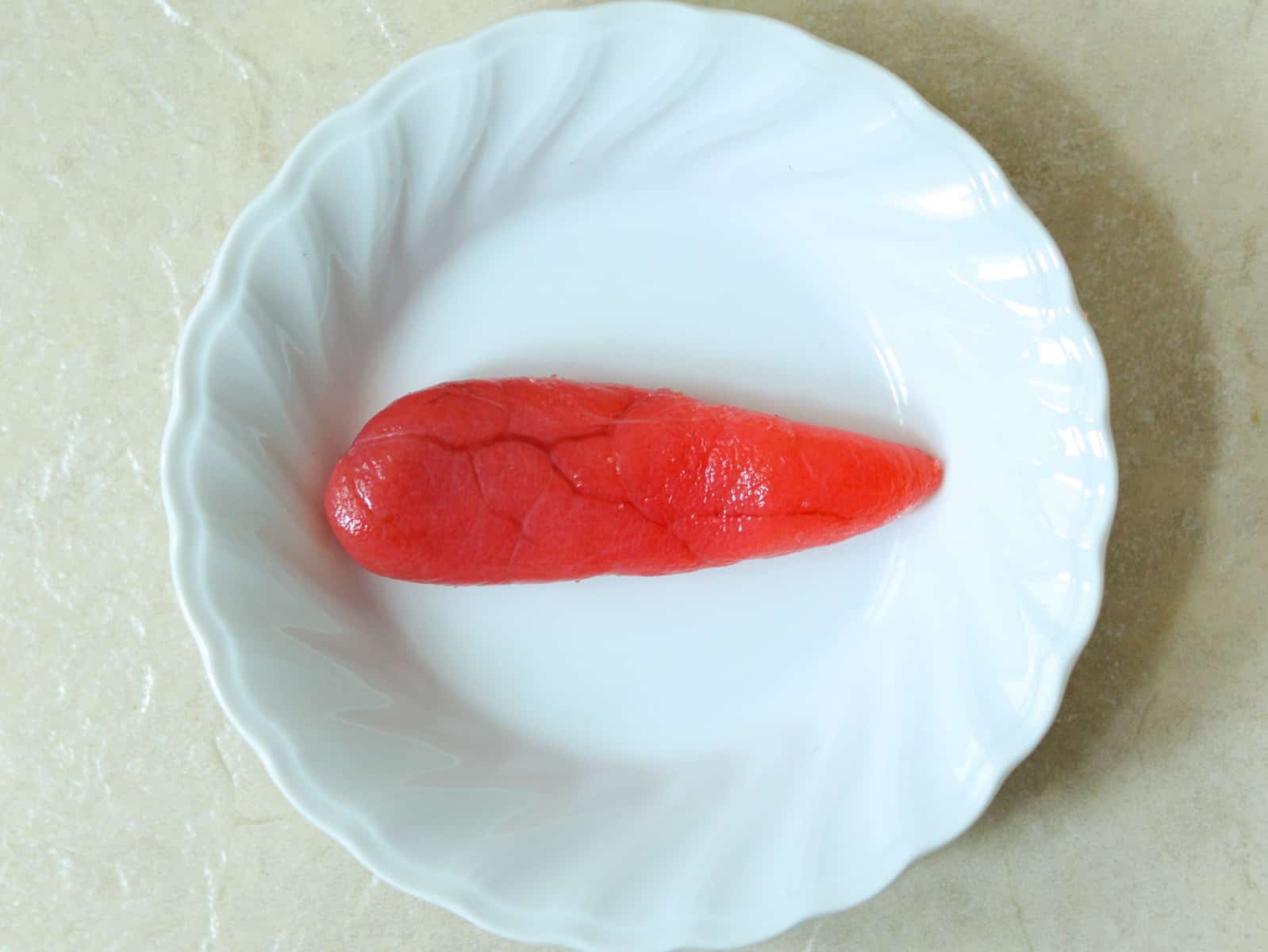
Topping choices
Tarako spaghetti is delicious on its own, but it is even better with added toppings. Popular options include shredded nori seaweed, shiso leaves (perilla), and green onions.
My top recommendation is absolutely shredded nori seaweed. It pairs perfectly with this dish. Be sure to give it a try.
Various variations
In Japan, there are various types of tarako spaghetti recipes, such as "Tarako Spaghetti with Butter" (the recipe featured on this page), "Yaki Tarako Spaghetti" (prepared by pan-frying), and "Tarako Cream Spaghetti" (made by combining tarako and fresh cream).
The recipe I'm sharing is the most basic style in Japan. It is easy to prepare, delicious, and requires no cooking utensils other than a pot for boiling the spaghetti.
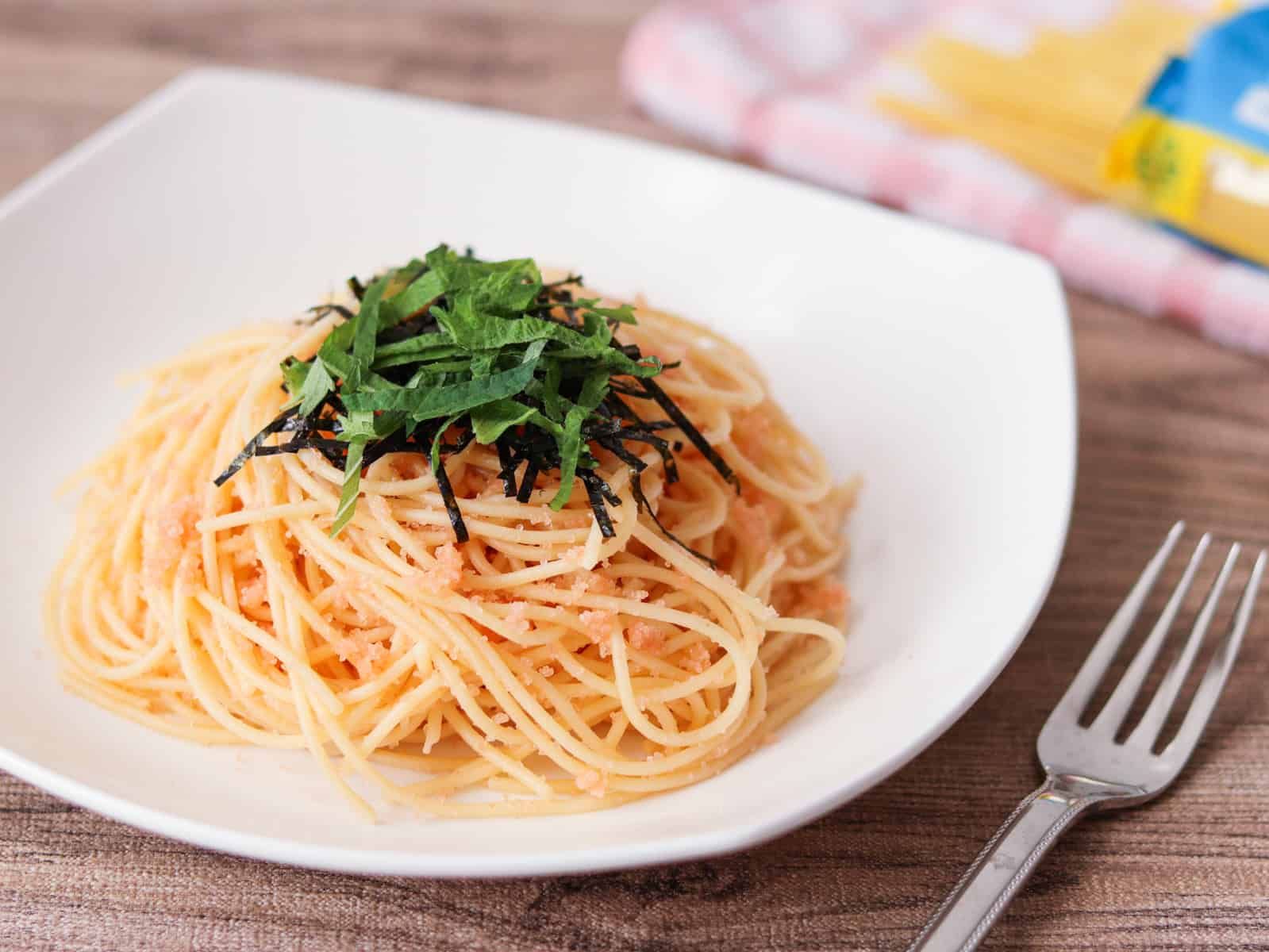
Ingredients
- 3 oz spaghetti
- 0.35 oz salted butter
- 1 oz tarako (salted pollack roe)
- ½ tsp soy sauce
Toppings (optional):
- 2 shiso leaves (perilla)
- shredded nori seaweed
Step-by-step instructions
🕒 Total 15 mins
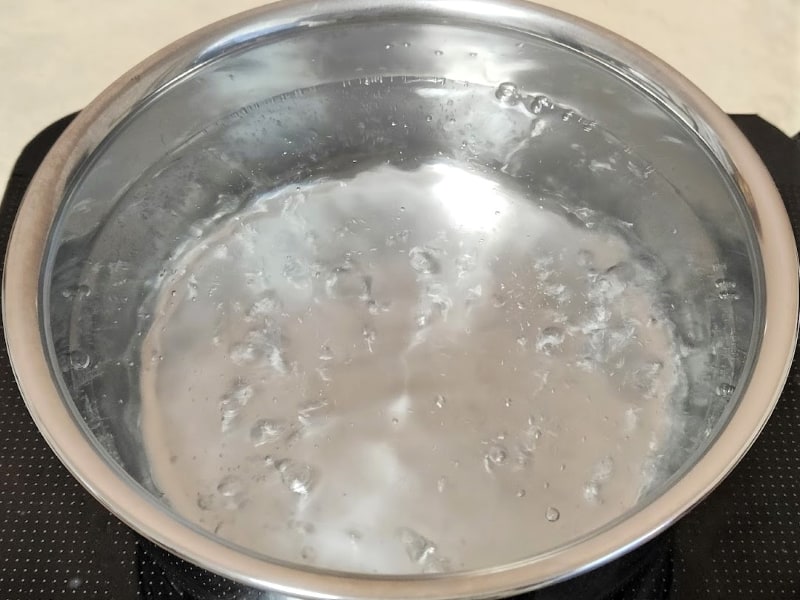
Step 1
Bring plenty of water to a boil in a large pot, then add salt (about 1% of the water's volume, not included in the recipe). While waiting for the water to boil, proceed with steps 2-4.
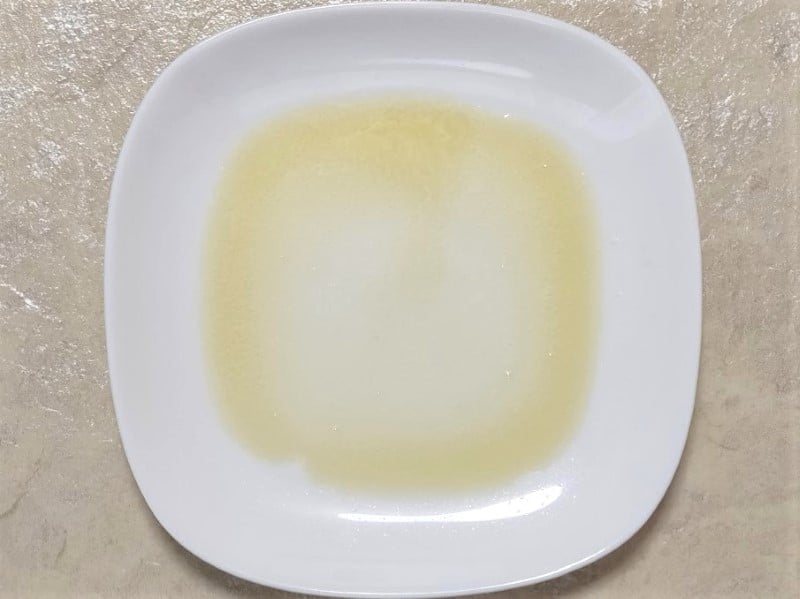
Step 2
Put the butter on a large microwave-safe plate and microwave it. Just before the butter is completely melted, stop microwaving and remove the plate.
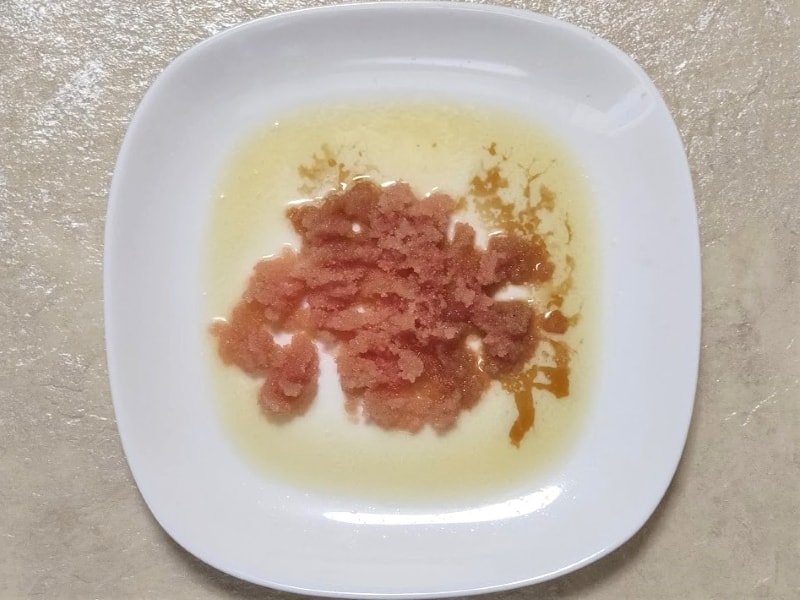
Step 3
Scrape the roe from the tarako using the back of a knife or a spoon, then place it on the plate with the butter, and mix in soy sauce.
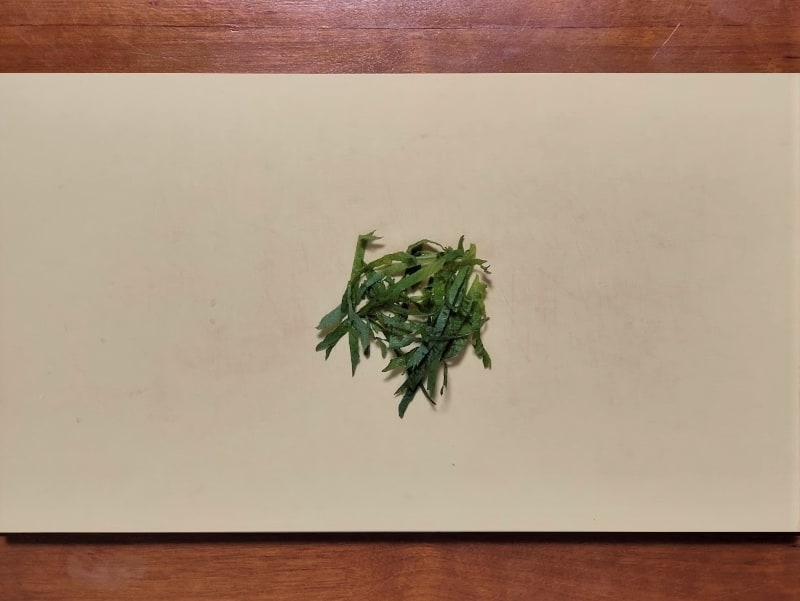
Step 4
Remove the stems from the shiso leaves and slice them lengthwise into thin strips.
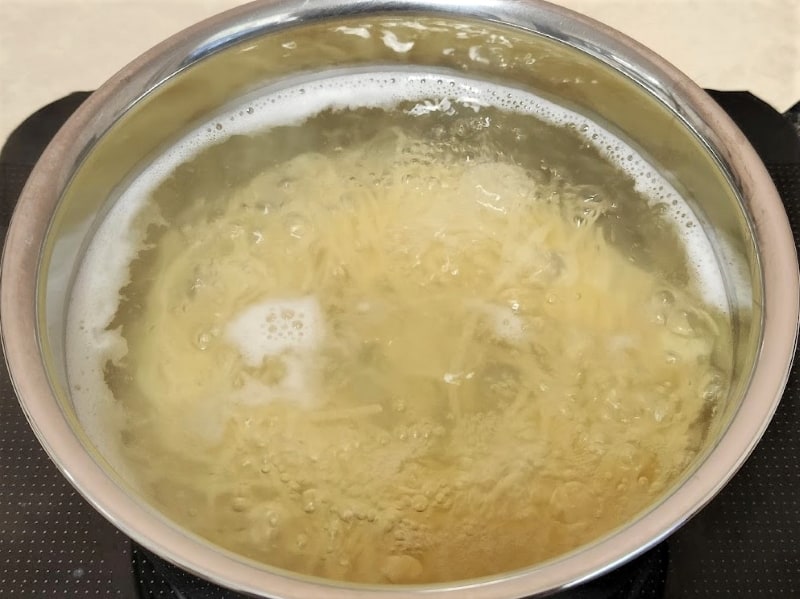
Step 5
Boil the spaghetti according to the package instructions.
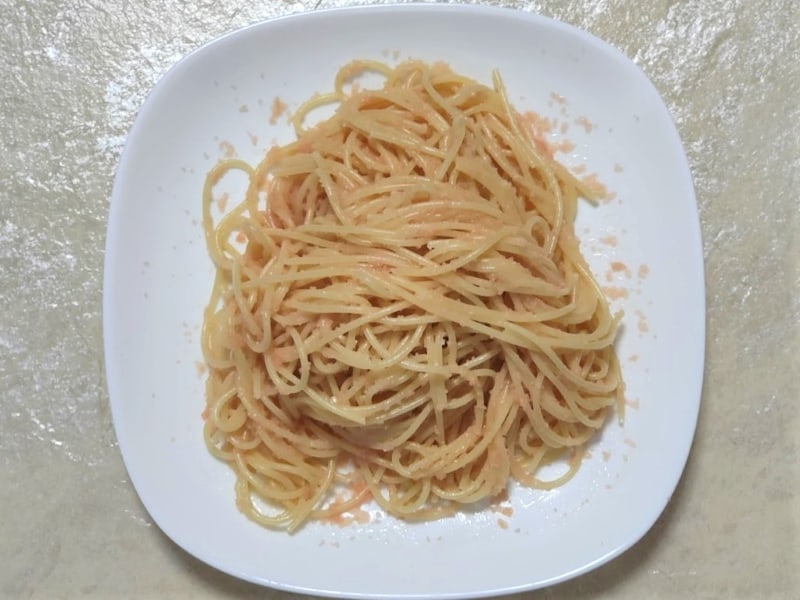
Step 6
Once the spaghetti is cooked, drain it in a colander. After that, mix it thoroughly with the tarako and butter on the plate.
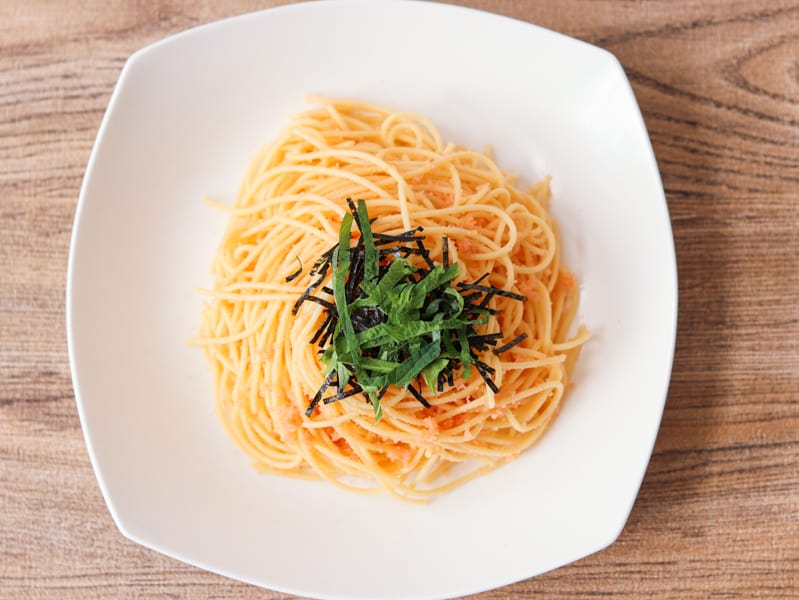
Step 7
Serve the spaghetti on the plate and sprinkle shredded shiso leaves and shredded nori on top to taste.
To Store
It can be stored in the refrigerator for up to 2 days. However, it is advisable to consume it as soon as possible after cooking to enjoy its optimal texture.
Tips on how to make
- Boil the spaghetti in plenty of water in a large pot. Using too little water may cause the spaghetti to clump together.
- Boil the spaghetti in salted water. This gives it a firm texture. However, since tarako already has a salty flavor, add only about 1% of the water's volume of salt to the boiling water to prevent the spaghetti from becoming too salty.
- When heating butter in the microwave, be careful not to burn it. It is recommended to stop the microwave just before it is completely melted.
Recipe Card
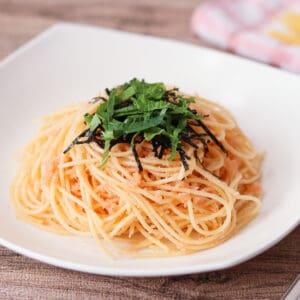
Tarako Spaghetti
Ingredients
- 3 oz spaghetti
- 0.35 oz salted butter
- 1 oz tarako (salted pollack roe)
- ½ tsp soy sauce
Toppings (optional):
- 2 shiso leaves (perilla)
- shredded nori seaweed
Instructions
- Bring plenty of water to a boil in a large pot, then add salt (about 1% of the water's volume, not included in the recipe). While waiting for the water to boil, proceed with steps 2-4.
- Put the butter on a large microwave-safe plate and microwave it. Just before the butter is completely melted, stop microwaving and remove the plate.
- Scrape the roe from the tarako using the back of a knife or a spoon, then place it on the plate with the butter, and mix in soy sauce.
- Remove the stems from the shiso leaves and slice them lengthwise into thin strips.
- Boil the spaghetti according to the package instructions.
- Once the spaghetti is cooked, drain it in a colander. After that, mix it thoroughly with the tarako and butter on the plate.
- Serve the spaghetti on the plate and sprinkle shredded shiso leaves and shredded nori on top to taste.
Notes
- It can be stored in the refrigerator for up to 2 days. However, it is advisable to consume it as soon as possible after cooking to enjoy its optimal texture.


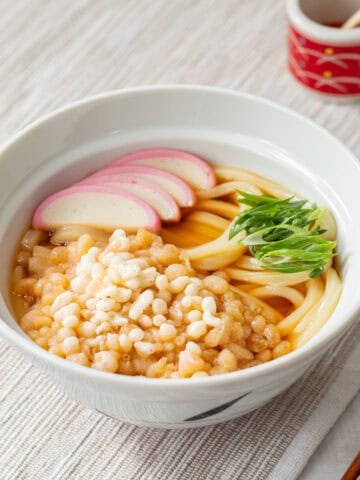

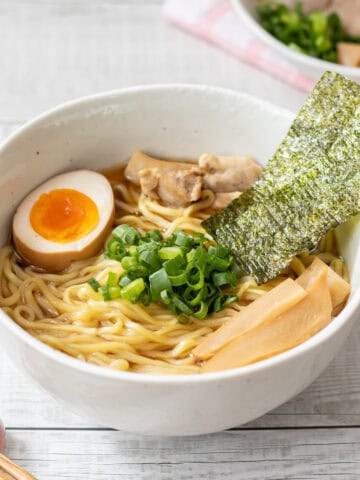
Leave a Reply